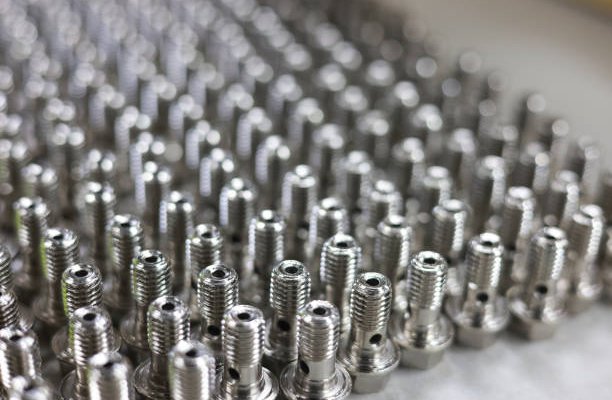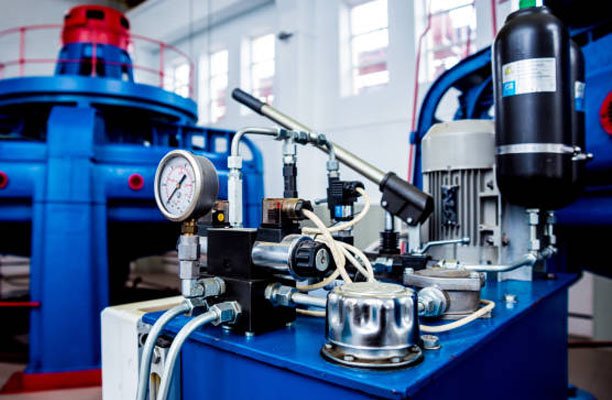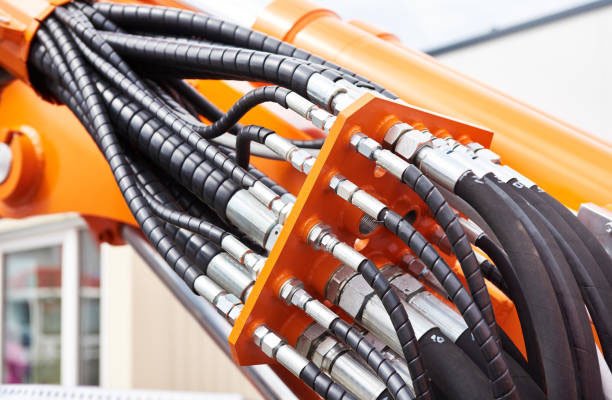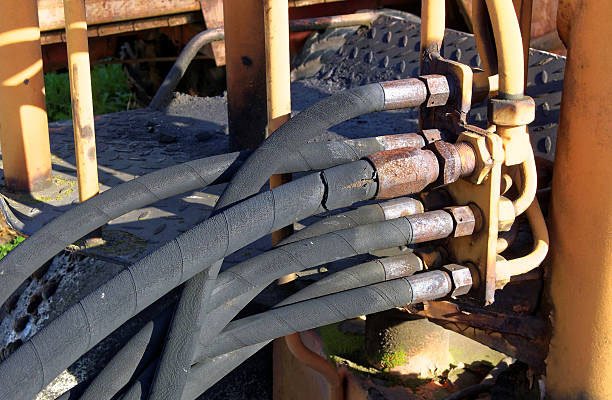Introduction
Hydraulic systems power everything from construction machines to factory equipment, and a key step in keeping them safe and reliable is knowing how to install hydraulic adapters correctly. These small components create secure connections between hoses, pipes, and fittings, allowing fluid to flow under high pressure without leaks.
When installed the wrong way, hydraulic adapters can cause leaks, breakdowns, or even dangerous accidents. That’s why learning the proper method—and following safety tips—is the best way to protect your equipment, your workplace, and yourself.
Understanding Hydraulic Adapters
What Are Hydraulic Adapters?
Hydraulic adapters are small yet powerful components that bridge gaps between hydraulic hoses, pipes, pumps, and cylinders. Think of them as the “connectors” that keep pressurized fluid moving through a system without leaks. They are designed to withstand high pressure, vibration, and extreme conditions, making them critical to system integrity.
Unlike ordinary plumbing fittings, hydraulic adapters are engineered for precise tolerances, meaning even a slight misalignment can compromise the system. They often come with specialized threads (SAE, BSPP, JIC, NPT, ORFS, etc.), each with its own standards for sealing and torque.
Common Types of Hydraulic Adapters
Hydraulic adapters aren’t one-size-fits-all. Here are the most common types:
- Straight adapters – Best for direct, in-line connections between two components.
- Elbow adapters (45° & 90°) – Allow connections in tight spaces without kinking hoses.
- Tee adapters – Distribute fluid in two directions, commonly used in branching lines.
- Cross adapters – Connect four lines at once, often found in complex hydraulic circuits.
- Bulkhead adapters – Used when hoses pass through panels or equipment walls.
Each type serves a specific purpose, and using the wrong one could result in leaks, weak connections, or damaged components.
Industries That Rely on Hydraulic Adapters
Hydraulic adapters are everywhere, even if you don’t notice them. Some key industries include:
- Construction & Mining – Excavators, bulldozers, loaders, and cranes rely on adapters for rugged, high-pressure applications.
- Agriculture – Tractors, harvesters, and irrigation systems depend on them for smooth operations.
- Aerospace – Aircraft hydraulic systems use lightweight, high-strength adapters for landing gear, brakes, and flight controls.
- Manufacturing & Automation – Robotics and hydraulic presses require precise adapters to handle repetitive, high-pressure cycles.
Tools and Equipment Needed for Installation
Installing hydraulic adapters correctly requires the right tools and protective gear. Using improper tools is one of the leading causes of thread damage and leaks in hydraulic systems.
Basic Hand Tools
- Open-end wrenches – Essential for tightening and loosening fittings.
- Adjustable wrench – Useful for various sizes, though not ideal for precision torque.
- Torque wrench – The most important tool to ensure fittings are tightened to manufacturer specifications.
Safety Gear and Protective Equipment
Working with hydraulics can be dangerous, so never skip safety gear. At minimum, you’ll need:
- Safety glasses or a face shield to protect against fluid spray.
- Heavy-duty gloves to prevent cuts and burns from hot fluid.
- Steel-toe boots for foot protection when working with heavy machinery.
- Protective clothing to shield against oil contact and potential injection injuries.
Specialized Hydraulic Tools
For professional-level installation, you may also need:
- Hydraulic line cleaning kit – Removes contaminants from hoses before connection.
- Seal installation tools – Helps position O-rings and seals without damage.
- Thread gauges – Ensures you’re using the correct thread type and size.
- Leak detection tools – Non-contact devices to safely detect leaks in pressurized systems.
Step-by-Step Guide: How to Install Hydraulic Adapters Correctly
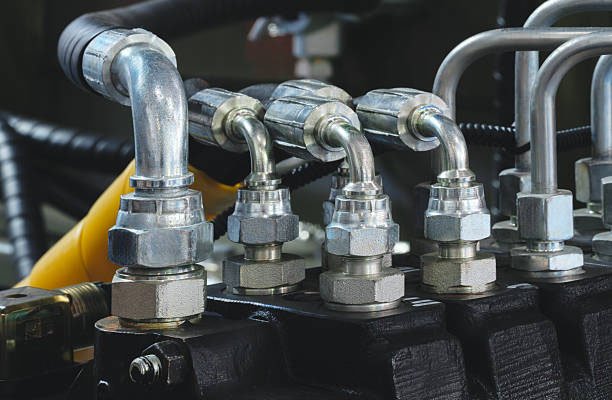
Installing hydraulic adapters isn’t just about tightening a fitting. It’s a methodical process that requires attention to detail, cleanliness, and safety. Here’s a step-by-step breakdown:
Step 1: Inspecting the Hydraulic System
Before starting, always depressurize the system. Never attempt to disconnect or install adapters while pressure remains in the lines—doing so could cause sudden bursts of hydraulic fluid.
- Look for damaged hoses, worn fittings, or cracked adapters.
- Check for corrosion or contamination, especially in older systems.
- Make sure the work area is clean and well-lit to avoid mistakes.
Step 2: Choosing the Right Adapter
Not all adapters are created equal. You must select the correct thread type, pressure rating, and size for your system.
- Match thread standards (SAE, JIC, BSPP, ORFS, NPT).
- Confirm the pressure rating of the adapter matches or exceeds system pressure.
- Avoid “mix-and-match” fittings—these are the most common cause of leaks.
💡 Pro Tip: Keep a thread identification guide in your toolbox to quickly verify adapter compatibility.
Step 3: Cleaning and Preparing Fittings
Hydraulic systems are extremely sensitive to dirt, dust, and metal shavings. Even a tiny particle can cause premature seal failure or system inefficiency.
- Clean threads with a lint-free cloth.
- Use a hydraulic line cleaning kit for hoses.
- Keep all open ends capped until installation.
Step 4: Threading and Alignment
Cross-threading is a silent killer of hydraulic fittings. Always start threading by hand before using tools.
- Ensure the adapter is aligned correctly.
- If you feel resistance too early, back out and start again.
- Never force threads into place—it can permanently damage components.
Step 5: Tightening with Proper Torque
Over-tightening can crack fittings; under-tightening can cause leaks. The key is precision tightening with a torque wrench.
- Follow manufacturer torque specifications—these vary by size and thread type.
- Avoid using pipe sealants or Teflon tape unless explicitly recommended.
- For metal-to-metal seals (like JIC), the correct torque is critical to prevent leaks.
Step 6: Pressure Testing and Final Checks
Once the adapter is installed, it’s time to test.
- Start with a low-pressure test to check for leaks.
- Gradually bring the system to operating pressure.
- Look for drips, spray, or unusual hissing sounds.
- Use a piece of cardboard or a leak-detection spray—never your hand—to check for leaks.
Safety Tips for Installing Hydraulic Adapters
Hydraulic systems operate under extreme pressures, sometimes exceeding 3,000 PSI. A single mistake can lead to serious injuries or equipment damage. Here are crucial safety tips:
Avoiding Over-Tightening
It’s tempting to crank down on a fitting to “make sure it’s tight.” But over-tightening can:
- Crack adapter bodies.
- Strip threads.
- Crush O-rings or seals, making leaks more likely.
Always tighten to manufacturer specifications, not guesswork.
Preventing Contamination in Hydraulic Lines
Contaminants are responsible for up to 80% of hydraulic failures. To prevent this:
- Store adapters in sealed containers until use.
- Clean work surfaces before installation.
- Flush hoses and fittings before connecting.
Proper Body Positioning to Reduce Injury Risk
When testing hydraulic lines:
- Stand to the side of the fitting, never directly in front of it.
- Keep your face and body away from high-pressure hoses.
- Position yourself so that if a hose bursts, you’re out of the fluid spray path.
Handling High-Pressure Hydraulic Systems Safely
- Never check for leaks with your hands. Fluid injection injuries can penetrate skin and muscle.
- Use special leak-detection sprays or cardboard sheets.
- Shut down the system immediately if you notice a sudden pressure drop.
Common Mistakes to Avoid During Installation
Even experienced technicians can fall into bad habits. Here are mistakes that must be avoided:
Using the Wrong Adapter Type
Mixing different thread standards—like connecting a BSPP adapter to an NPT fitting—will not seal properly. This often leads to persistent leaks or damaged threads.
Ignoring Manufacturer Specifications
Each manufacturer provides torque values and installation guidelines. Ignoring these can cause premature failures.
- Over-tightening → cracks.
- Under-tightening → leaks.
- Wrong sealant → contamination.
Reusing Old Seals or O-Rings
Reusing seals might save a few dollars upfront, but it’s a recipe for disaster. Old O-rings often:
- Flatten or harden over time.
- Develop tiny cracks invisible to the naked eye.
- Fail under pressure, causing leaks.
Always install new seals during adapter replacement—it’s a small investment that prevents big problems.
Maintenance Tips After Installation
Installing hydraulic adapters correctly is only half the battle. To ensure long-lasting performance, you must maintain and monitor the system regularly. Proper maintenance prevents unexpected failures and keeps equipment running efficiently.
Regular Inspection of Connections
- Inspect adapter connections weekly on high-use equipment and monthly on low-use systems.
- Look for loose fittings, visible cracks, or rust spots.
- Wiggle the hose slightly—if you notice movement, the adapter may need tightening or replacement.
Checking for Hydraulic Leaks
Leaks aren’t always obvious. Hydraulic fluid may leave behind a shiny film instead of a visible drip.
- Run your hand near but not on the connection to feel for misting or spray.
- Use a UV dye test to detect micro-leaks in complex systems.
- Never ignore small leaks—they often indicate a larger issue developing.
Replacing Worn or Damaged Parts
Hydraulic adapters and seals naturally wear out over time. Replace components if you notice:
- Rounded threads or difficulty tightening.
- Flattened O-rings or seals that don’t spring back.
- Corrosion or pitting on metal surfaces.
Troubleshooting Hydraulic Adapter Problems
Even with proper installation, issues can still arise. Knowing how to troubleshoot quickly prevents long-term system damage.
Identifying Leaks and Seal Failures
- Drip leaks → Often caused by under-tightening or worn seals.
- Spray leaks → Usually from cracked fittings or over-tightened adapters.
- Seepage leaks → Contamination inside the connection preventing a full seal.
Fix: Replace damaged seals, re-tighten to torque specs, and clean all mating surfaces.
Fixing Cross-Threading Issues
Cross-threading occurs when threads are misaligned during installation. Signs include:
- Resistance early in threading.
- “Crunchy” or uneven feel when tightening.
- Threads that don’t seat flush.
Fix:
- Remove the adapter immediately—forcing it will destroy both components.
- Inspect threads with a magnifier.
- Replace damaged adapters instead of trying to “force-fit” them.
Dealing with Pressure Drops
If you notice reduced system performance or unusual noises, it could be due to a bad adapter connection. Causes include:
- Loose fittings allowing fluid to escape.
- Undersized adapters restricting flow.
- Internal damage to hoses or seals.
Fix: Verify torque, confirm adapter size, and replace faulty components.
Advanced Tips for Professionals
For seasoned technicians or those working in high-demand industries, precision and compliance are key. These advanced tips help you go beyond basic installation.
Using Torque Wrenches for Accuracy
Hand-tightening isn’t enough in hydraulic systems where tolerances are tight.
- Use a calibrated torque wrench for every critical fitting.
- Keep torque charts handy for each adapter type.
- Check calibration on your torque wrench every 6–12 months.
Applying Hydraulic Sealants Correctly
Not all fittings require sealant—in fact, using sealant on the wrong connection can cause contamination.
- Apply only to tapered threads (NPT, BSPT), never to flare fittings (JIC, ORFS, SAE).
- Use manufacturer-approved hydraulic sealants—avoid generic plumber’s tape.
- Apply sparingly; excess can break off and block hydraulic valves.
Following ISO and SAE Standards
Hydraulic systems must comply with international standards to ensure safety and compatibility.
- SAE J514 – Covers JIC 37° flare fittings.
- ISO 8434 – Covers metallic tube connections.
- SAE J1453 – Covers O-ring face seal (ORFS) fittings.
Compliance ensures you’re not just safe but also meeting industry and regulatory requirements.
Environmental and Safety Regulations
Hydraulic systems don’t just affect machines—they also impact the environment and workplace safety. Following proper regulations helps reduce environmental damage while keeping workers safe.
Proper Disposal of Hydraulic Fluids
Hydraulic oil is toxic if spilled into soil or waterways. Improper disposal can lead to hefty fines and environmental harm.
- Collect used hydraulic fluids in approved containers.
- Take fluids to certified recycling or disposal centers.
- Never pour oil into drains, onto the ground, or into water sources.
Workplace Safety Compliance
Agencies like OSHA (Occupational Safety and Health Administration) in the U.S. and other regulatory bodies worldwide have strict guidelines.
- Employers must provide personal protective equipment (PPE).
- Systems must be depressurized before service.
- Workers should receive hydraulic safety training.
Following these rules not only avoids penalties but also protects lives.
Conclusion
Hydraulic adapters may look small, but they play a big role in keeping machines safe and efficient. Installing them the right way means choosing the correct adapter, keeping everything clean, tightening to the proper torque, and always putting safety first.
If you rush or skip steps, you risk leaks, equipment damage, and injuries. But if you follow the proper process and check your system regularly, your hydraulic equipment will run smoothly and last longer.
Remember:
- Use the right adapter for the job.
- Don’t over-tighten or reuse old seals.
- Always check for leaks safely.
With these simple steps, you can keep your hydraulic system strong, reliable, and safe.
FAQs
1. Can I reuse hydraulic adapters?
It’s possible if they’re undamaged, but experts recommend replacing them. Old adapters may have worn threads or hidden cracks that lead to leaks.
2. How do I know if I’ve tightened an adapter enough?
The only reliable way is by using a torque wrench and following manufacturer specifications. Hand-tightening alone isn’t accurate.
3. Should I use Teflon tape on hydraulic adapters?
No—Teflon tape can shred and contaminate the hydraulic system. Use hydraulic-approved sealants and only where specified.
4. What’s the most common cause of hydraulic leaks?
Improper installation (like cross-threading), worn seals, or using the wrong type of adapter.
5. Can hydraulic leaks be dangerous?
Yes. High-pressure leaks can cause fluid injection injuries, which are medical emergencies. Always check for leaks with cardboard or detection fluid, never with your hand.
6. How often should hydraulic adapters be inspected?
At least monthly, but more often in high-pressure or heavy-use applications. Preventive maintenance saves money and avoids accidents.


